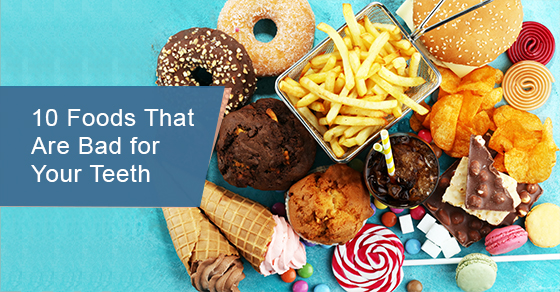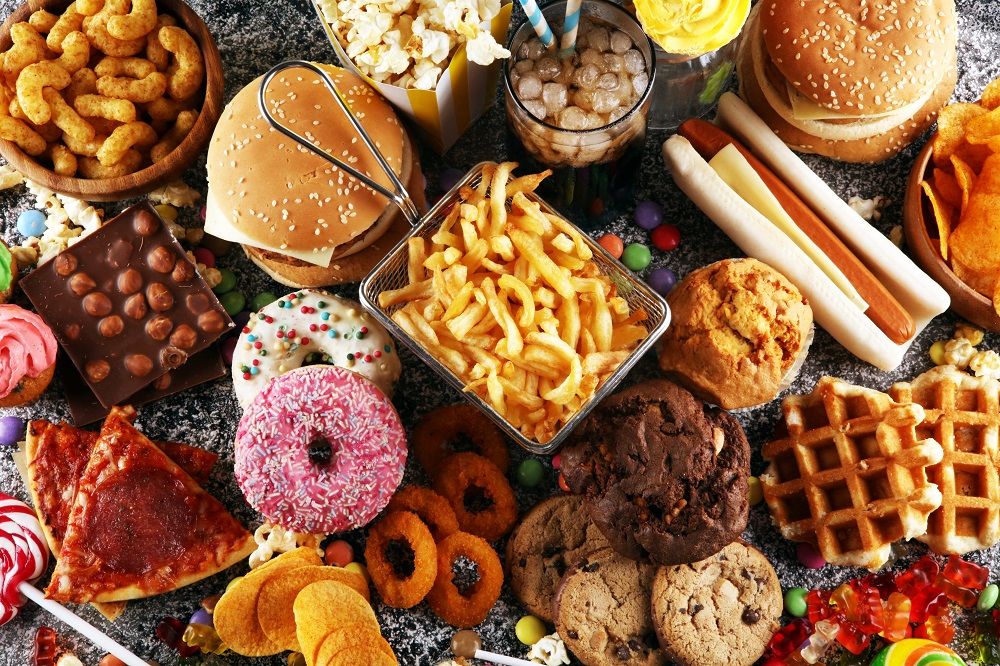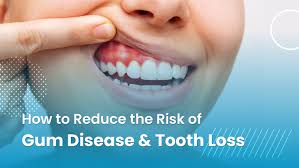
Diet strongly affects oral health sugary, acidic, and starchy foods feed bacteria, weaken enamel, and irritate gums. Drinks like soda, coffee, and alcohol dry the mouth and reduce protection, while hard or sticky foods can physically damage teeth. Choosing tooth-friendly options like cheese, nuts, vegetables, and water supports enamel strength and gum health.
Key Takeaways
- Sugary, starchy, and acidic foods increase enamel erosion and bacterial growth.
- Coffee, tea, and alcohol reduce saliva, raising cavity and gum risks.
- Sticky and hard foods cause cracks, chips, and gum irritation.
- Rinse after acidic foods and wait before brushing to protect enamel.
- Saliva and hydration are vital for neutralizing acids and preventing decay.
- Tooth-friendly foods: dairy, nuts, fibrous fruits, vegetables, fatty fish, and water.
How Foods Impact Teeth and Gum Health
Your mouth naturally contains bacteria that feed on sugars and starches from the foods you eat. This process produces acids that can damage tooth enamel the protective outer layer of your teeth. Over time, these acids lead to decay.
Plaque, a sticky film of bacteria and food particles, builds up and can harden into tartar if not removed. This irritates gums, leading to inflammation and gum disease.
Acidic foods also weaken enamel directly through erosion, increasing sensitivity and vulnerability to cavities. Foods that stick to your teeth encourage prolonged acid attacks since they are harder to wash away. Meanwhile, dry mouth caused by certain foods and drinks reduces saliva flow, which normally protects teeth by neutralizing acids.
The Worst Foods for Your Teeth and Gums

Healthy gums are the foundation for strong teeth. Unlike enamel, which is hard and mineral-rich, gum tissue is soft and easily irritated. Certain foods don’t just cause cavities, they also attack or inflame the gums, making them more prone to infection. Here’s a closer look at the worst offenders:
Sugary Candies and Sweets
Sugar is the number one fuel for harmful bacteria in the mouth. When these bacteria feed on it, they release acid that eats away at enamel. Sticky candies like caramel or gummies cling tightly to teeth, sitting in crevices for hours. Hard candies may not stick, but they dissolve slowly, keeping sugar in contact with teeth the entire time. Both create a constant acid attack that weakens enamel and irritates gums.
Soda and Soft Drinks
Sodas are a double threat because they are both sugary and acidic. The sugar fuels bacteria, while the acid directly dissolves enamel. Even sugar-free sodas are harmful because their acidity alone is enough to wear down teeth. People who sip sodas throughout the day keep their mouth in a constant acidic state, which accelerates decay and makes gums more prone to swelling and redness.
Citrus Fruits and Juices
Citrus foods like oranges, lemons, and grapefruits are healthy in many ways, but they’re tough on your teeth. Their natural acids soften enamel, making teeth more sensitive and easier to wear down. Juices are worse because they often have added sugar, combining acid erosion with cavity risk. Eating whole fruit is better since the fiber reduces acid contact, but overdoing citrus still irritates gums and weakens enamel.
Starchy Foods Like Bread, Pasta, and Chips
Starchy foods might not taste sweet at first, but once chewed, saliva breaks them down into sugars. Soft bread and chips often leave sticky paste or crumbs that cling to the gum line and between teeth. This residue feeds bacteria, creating plaque that eventually hardens into tartar if not cleaned. Tartar irritates gums, making them bleed easily and pushing them toward gum disease.
Dried Fruits
Dried fruits like raisins, dates, or figs seem like a healthier snack than candy, but for teeth, they’re just as risky. They’re packed with concentrated sugars, and their sticky texture means they latch onto enamel and sit in small crevices. Because they don’t wash away easily, they give bacteria more time to produce acid. This prolonged exposure harms enamel and irritates gum tissue.
Alcoholic Beverages
Alcohol harms oral health by drying out the mouth. Saliva is the body’s natural defense against acid and bacteria, so when saliva production drops, teeth and gums lose protection. Drinks like wine and cocktails are also acidic, which adds to enamel erosion. Over time, gums in a dry mouth become inflamed, and infections like gum disease are harder to fight because alcohol also lowers the immune response in gum tissue.
Coffee and Tea
These everyday drinks slowly damage teeth in several ways. Both contain tannins, compounds that stick to enamel and cause yellow or brown stains. They’re also acidic, which weakens enamel if consumed often. On top of that, caffeine reduces saliva flow, creating dry mouth conditions where bacteria thrive. The result is stained teeth, weakened enamel, and irritated gums over time.
Ice and Hard Foods
Chewing on ice or other hard foods might feel harmless, but it’s one of the fastest ways to physically damage teeth. The pressure can cause cracks, chips, or even broken fillings. Small cracks weaken enamel and expose the softer dentin underneath. Hard edges from broken pieces can also scrape or puncture gums, leaving them sore or swollen.
Pickled and Acidic Vegetables
Pickles and vinegar-based vegetables may seem like light snacks, but their acidity makes them rough on enamel. Frequent exposure to vinegar erodes enamel layer by layer, and gums that are already sensitive can become more irritated. If eaten regularly without rinsing, pickled foods can speed up enamel wear and gum tenderness.
Popcorn Kernels
Popcorn husks are notorious for getting stuck between teeth or under the gum line. Even a small piece lodged in the gums can cause irritation, swelling, and discomfort. If bacteria enter the irritated spot, it can lead to an infection called an abscess, which is painful and requires dental treatment. For many people, popcorn is a hidden trigger for gum pain.
How to Reduce the Damage
It’s not always realistic to completely cut out sugary, acidic, or starchy foods. The good news is that you can lower the risks by adopting some simple habits that protect your teeth and gums.

- Rinse your mouth with water after acidic items: When you eat citrus fruits, drink soda, or consume vinegar-based foods, acids stay on your teeth. A quick rinse with plain water helps wash away those acids and food particles before they cause enamel erosion or gum irritation.
- Wait 30 to 60 minutes before brushing: After acidic foods or drinks, your enamel becomes temporarily softer. Brushing immediately can actually scrub away this weakened enamel. Waiting at least half an hour gives saliva time to neutralize acids and reharden the enamel, making brushing safer.
- Chew sugar-free gum: Chewing gum without sugar stimulates saliva flow. Saliva is the body’s natural defense, helping wash away food debris, balance acids, and deliver minerals like calcium and phosphate back to the enamel. This reduces both cavities and gum irritation.
- Choose tooth-friendly snacks: Snacks like cheese, nuts, and crunchy vegetables don’t just avoid sugar they actively help your mouth. Cheese neutralizes acids and provides calcium. Nuts encourage chewing, which boosts saliva. Crunchy vegetables like carrots and celery can gently scrub teeth and gums as you eat them.
- Visit your dentist regularly: Even with good habits, plaque and tartar can still build up in hard-to-reach areas. Professional cleanings remove these deposits before they cause gum disease or cavities. Regular checkups also catch early signs of problems so they can be treated before becoming serious.
Foods for Your Teeth and Gums
Good oral health isn’t just about avoiding harmful foods. The right foods can actively strengthen teeth, nourish gums, and protect your mouth from bacteria and acid damage. By adding these options to your daily diet, you can build a strong foundation for a healthier smile.
| Food Group | Benefit for Teeth | Benefit for Gums | Best Examples |
| Dairy Products | Provides calcium and phosphorus to strengthen enamel | Supports bone around teeth and balances mouth pH | Milk, cheese, yogurt |
| Crunchy Fruits & Veg | Scrub tooth surfaces and increase saliva | Reduce plaque buildup and massage gums | Apples, carrots, celery |
| Leafy Greens | Add calcium for enamel protection | Vitamin C reduces gum inflammation and supports healing | Spinach, kale, lettuce |
| Nuts & Seeds | Provide minerals and mild scrubbing action | Protein and healthy fats reduce gum inflammation | Almonds, walnuts, sesame seeds |
| Fatty Fish | Vitamin D helps absorb calcium | Omega-3s reduce risk of gum disease | Salmon, sardines, mackerel |
| Green & Herbal Teas | Polyphenols limit bacterial growth | Anti-inflammatory effects on gums | Green tea, chamomile tea |
| Water | Rinses away acids and food debris | Keeps gums hydrated and supports saliva flow | Plain water, fluoridated water |
| Vitamin C Foods | Prevents enamel weakness from infections | Supports collagen production and healing | Bell peppers, strawberries, broccoli |
| Whole Grains | Less sugar breakdown than refined carbs | B vitamins and iron support gum strength | Brown rice, oats, whole wheat bread |
FAQs
1. Which foods damage teeth the most?
Sugary candies, sodas, dried fruits, starchy snacks, citrus juices, alcohol, coffee, tea, pickled foods, and popcorn kernels are some of the biggest culprits.
2. Why are sugary foods so harmful?
Sugar feeds bacteria in your mouth. These bacteria release acid that weakens enamel, making it easier for cavities to form.
3. Are sugar-free sodas better for oral health?
Not really. Even without sugar, sodas are highly acidic. The acid alone can erode enamel and increase tooth sensitivity.
4. Is dried fruit really as bad as candy?
Yes. Dried fruit contains concentrated sugar and its sticky texture clings to enamel, allowing acid-producing bacteria to act for longer periods.
5. How do starchy foods harm my mouth?
Foods like bread, chips, and pasta break down into sugars. The sticky residues feed bacteria, which leads to plaque buildup at the gum line.
6. Do citrus fruits harm my teeth?
Citrus is healthy, but its citric acid softens enamel. Too much citrus or frequent juice consumption increases enamel wear and gum sensitivity.
7. How does alcohol affect teeth and gums?
Alcohol dries the mouth by reducing saliva. Without saliva’s protective effect, acids and bacteria build up, leading to gum inflammation and enamel erosion.
8. Why are coffee and tea considered harmful?
They stain enamel due to tannins, are acidic enough to weaken teeth, and caffeine reduces saliva, creating a dry mouth where bacteria thrive.
9. Is chewing ice bad for oral health?
Yes. Ice can crack enamel, break fillings, and injure gum tissue. These small cracks also make teeth more sensitive.
10. Are pickles and vinegar-based foods bad for gums?
Yes. Frequent exposure to vinegar erodes enamel layer by layer and irritates sensitive gum tissue.
11. Why is popcorn sometimes linked to gum problems?
Popcorn husks can lodge between teeth or under gums, scratching the tissue and sometimes leading to infection if bacteria enter.
12. Can I enjoy harmful foods occasionally?
Yes, moderation is key. Rinse your mouth with water afterward, chew sugar-free gum, and maintain good oral hygiene to reduce risks.
13. How soon should I brush after acidic foods or drinks?
Wait 30 to 60 minutes. Brushing too soon can scrub away softened enamel before saliva has time to protect it again.
14. What foods actually strengthen teeth?
Dairy, leafy greens, fibrous fruits, nuts, fatty fish, whole grains, and unsweetened green tea all protect enamel and support gum health.
15. How important is saliva in protecting oral health?
Very important. Saliva washes away acids and sugars, restores minerals to enamel, and keeps gums hydrated to resist infection.
16. Do spicy foods hurt gums?
Spicy foods don’t cause gum disease, but they can worsen irritation if gums are already inflamed or sensitive.
17. Can alcohol-free mouthwash help after eating harmful foods?
Yes. Rinsing with an alcohol-free mouthwash can neutralize acids, freshen breath, and reduce bacteria without drying the mouth.
18. Why do dentists warn against constant snacking?
Frequent snacking keeps teeth under constant acid attack. Each time you eat, bacteria produce acids that weaken enamel for about 20–30 minutes.
19. Can chewing sugar-free gum really help?
Yes. It boosts saliva flow, which washes away acids and food debris while delivering minerals like calcium back to enamel.
20. Are there drinks that are actually good for oral health?
Water and milk are the best. Water rinses away acids and keeps the mouth moist, while milk provides calcium and balances pH.
21. Can certain nutrients heal gums?
Yes. Vitamin C helps repair gum tissue, vitamin D improves calcium absorption, and omega-3s reduce gum inflammation.
22. Is tooth sensitivity linked to foods?
Yes. Acidic foods and drinks thin enamel, exposing dentin underneath. This makes teeth more sensitive to hot, cold, or sweet foods.
23. Can whitening products fix stains from coffee or tea?
Whitening can reduce stains, but it doesn’t stop enamel erosion. The best approach is limiting staining drinks and practicing consistent oral care.
24. Do whole grains really benefit gums?
Yes. Whole grains are rich in B vitamins and iron, which strengthen gum tissue and lower the risk of inflammation.
Conclusion
Your diet plays a major role in oral health. Sugary candies, sodas, dried fruits, and starchy snacks feed bacteria that weaken enamel and irritate gums. Citrus juices, pickled foods, and coffee or tea add acidity, while alcohol reduces saliva, leaving gums more prone to infection. Even chewing ice or popcorn can damage teeth or injure gum tissue. To protect your smile, rinse with water after acidic foods, wait before brushing, and choose tooth-friendly snacks like cheese, nuts, and crunchy vegetables. Balanced eating, along with regular dental care, helps maintain strong teeth and healthy gums.
Reference
Gross EL. Oral and systemic health. UpToDate. Accessed February 1, 2024.
World Health Organization. Oral health. WHO Fact Sheets. Accessed February 1, 2024.
Gill SA, et al. Integrating oral health into health professions school curricula. Medical Education Online. 2022; doi:10.1080/10872981.2022.2090308.
Mark AM. For the patient: Caring for your gums. Journal of the American Dental Association. 2023; doi:10.1016/j.adaj.2023.09.012.
Tonelli A, et al. The oral microbiome and the pathophysiology of cardiovascular disease. Nature Reviews Cardiology. 2023; doi:10.1038/s41569-022-00825-3.
American Academy of Periodontology. Gum disease and other diseases. AAP. Accessed February 1, 2024.
American Academy of Periodontology. Gum disease prevention. AAP. Accessed February 1, 2024.
American Dental Association. Oral health topics: Toothbrushes. ADA. Accessed February 1, 2024.
Issrani R, et al. Exploring the mechanisms and association between oral microflora and systemic diseases. Diagnostics. 2022; doi:10.3390/diagnostics12112800.
National Institute of Dental and Craniofacial Research. HIV/AIDS & oral health. NIDCR. Accessed February 1, 2024.
Aubrey Carson is an RDN with 9 years across hospital, outpatient, and private practice settings. They earned an MS in Clinical Nutrition from Tufts University – Friedman School (2016) and completed a Dietetic Internship at Mayo Clinic. Aubrey specializes in micronutrient assessment, evidence-based supplementation, and patient education. Their work includes CE presentations for the Academy of Nutrition and Dietetics and collaborations with Mass General Brigham on nutrition education resources.

